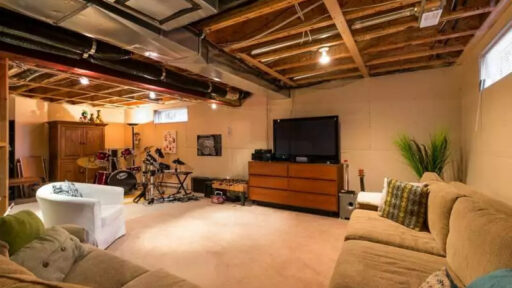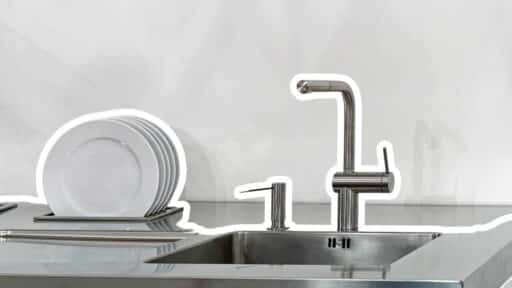If your home projects stall the second life gets busy, you’re not alone. The trick with HVAC care isn’t “more tasks”—it’s fewer, smarter ones that fit the pace of the seasons. Do the right five-minute checks when the weather turns, and you won’t be hunting down weird noises at 11 p.m. or paying surge-pricing for a rush call.
Think of maintenance as a rhythm: a quick pass when you swap wardrobes, another when you flip the ceiling fans, a final once-over before the first freeze. None of it requires a toolbox worthy of a contractor. It does require intent—plus a little honesty about what you’ll actually do on a Saturday morning.
Spring: Clear Airflow, Calmer Bills
Spring is airflow season. Pollen and winter dust load up filters, and outdoor units collect leaves like magnets. Start with the basics: replace the return filter, vacuum the return grille, and make sure supply vents aren’t buried behind sofas or drapes. If the outdoor condenser sits under trees, trim branches and clear a two-foot buffer so the coil can breathe.
This is also the best time to sanity-check whether your system is still the right fit for the house you live in now. Finished a basement? Added a home office with a door that’s always shut? Those changes alter airflow. If rooms run stuffy or the system short-cycles, talk to a pro about zoning, duct balancing, or upgrading HVAC system elements like a variable-speed blower that can modulate rather than blast and coast.
A quick thermostat reality check pays back all summer. Confirm schedules match your actual routine (weekday/work-from-home, weekend/sleep-in, vacation). If you’ve changed jobs or habits, last year’s setpoints are burning money. Keep fan mode on Auto unless a technician set up continuous low-speed circulation for air quality; constant fan in the wrong duct setup can add humidity and recirculate dust.
Summer: Keep It Clean, Keep It Moving
When the AC runs daily, small restrictions become big bills. Replace or wash filters on schedule, then give the indoor coil’s condensate line attention. Algae loves warm, wet places; a clogged line can trip a float switch and shut you down on the hottest afternoon. If your air handler has a clean-out, a quick flush with a bit of mild cleaner or a manufacturer-approved tablet helps prevent slime. No access port? At least check the drain pan for standing water and confirm the line drips outside when the system runs.
Step outside and look at the condenser while it’s on. The fan should spin smoothly, the top should be clear of debris, and the coil fins should look like a tidy grill—not matted felt. If you see lawn clippings crusted on the coil, shut the system off and gently rinse from the inside out (don’t blast it; you’ll fold the fins). This simple rinse restores heat rejection and can shave runtime without touching the thermostat.
If you like to “set it and forget it,” make sure you’re forgetting the right thing. Use a steady cooling setpoint rather than big daily swings. Large setpoint changes force long recovery runs that can overshoot humidity and feel clammy. Consistency is cheaper than you think because modern systems are most efficient at a steady load.
Fall: Prep for Heat, Not Surprises
Before nights turn cold, pivot your checklist. Swap to a fresh filter sized for heating airflow, not just cooling dust. Walk the house and make sure returns aren’t blocked by newly moved furniture or autumn décor—heating needs clear pathways as much as cooling does. If you have floor registers, vacuum them and peek for toys, pet hair, or those mystery receipts that flutter and rattle like a loose motor mount.
Now’s the time to schedule a tune-up if you haven’t had one in a year. Ask for the simple, verifiable things: temperature rise across the furnace or supply temp in heat-pump mode, static pressure readings, and confirmation that safeties and defrost (for heat pumps) are working. You want numbers on a work order, not a thumbs up. If you use a smart thermostat, tighten your heating schedule with shallow setbacks—2–3°F is plenty. Deep setbacks can trigger long morning recoveries that rely on auxiliary heat strips or push the furnace into long, noisy runs.
For a quick, authoritative gut-check on the basics—filters, coil cleaning, and what contractors should inspect—ENERGY STAR’s homeowner maintenance checklist summarizes what matters and what can wait without tanking efficiency. You’ll see the same themes: keep filters fresh, coils clean, and controls aligned to your actual routine, not an old schedule you forgot to edit.
Winter: Small Habits, Fewer Service Calls
Cold weather exposes little mistakes. If you run a heat pump, expect occasional defrost cycles where air feels cooler for a minute or two; that’s normal. What’s not normal is a system stuck on auxiliary heat. If your thermostat’s “AUX” indicator stays lit for hours on a mild day, you’re likely dealing with a control setting, a sensor problem, or a filter so loaded the system can’t move enough air to hit setpoint. Start with the filter; it’s the halftime orange of HVAC fixes.
Keep supply registers and returns unblocked. Throw rugs love to creep over floor supplies, and those fancy winter curtains can smother wall registers. Every inch of blocked grille area increases static pressure and reduces output, which makes rooms feel uneven and pushes the system into longer cycles. If a room still runs cold after you clear the path, try a small damper adjustment on warmer rooms rather than cranking the thermostat for the whole house.
One last winter habit: be gentle with manual overrides. If you punch the thermostat five times in a row, you’re not “speeding up” the heat; you’re just confusing staging logic that’s trying to protect comfort and equipment. Make a single, realistic change and give the system fifteen minutes. If you routinely need big boosts at 6 a.m., adjust the schedule instead of fighting it every morning.
A Simple Year-Round Rhythm That Works
You can make HVAC care as complicated as you like, but sticking with it requires a routine that feels almost boring. Here’s the mindset that actually holds:
Use the seasons as triggers. When you swap jackets, swap filters. When you roll the grill back into the garage, rinse the condenser. When you put holiday boxes away, check the thermostat schedule and drain line.
Favor small, steady improvements over heroic fixes. Steady setpoints beat daily yo-yoing. A two-minute register check beats a weekend of ductwork regret. A quick visual of the outdoor unit after a windstorm beats the “why is it so loud now?” spiral.
Document once, benefit twice. Jot the filter size in your phone, plus the date you changed it. Snap a photo of the outdoor coil after you rinse. If you do call for service, you’ll have a baseline to share—a surefire way to get better advice, faster.
Conclusion
Seasonal HVAC tasks shouldn’t feel like a second job. Tie them to the moments you already notice—first warm day, first chilly night—and keep each pass short, specific, and repeatable. Do that, and comfort stays steady while energy bills stop lurching around with the weather.








